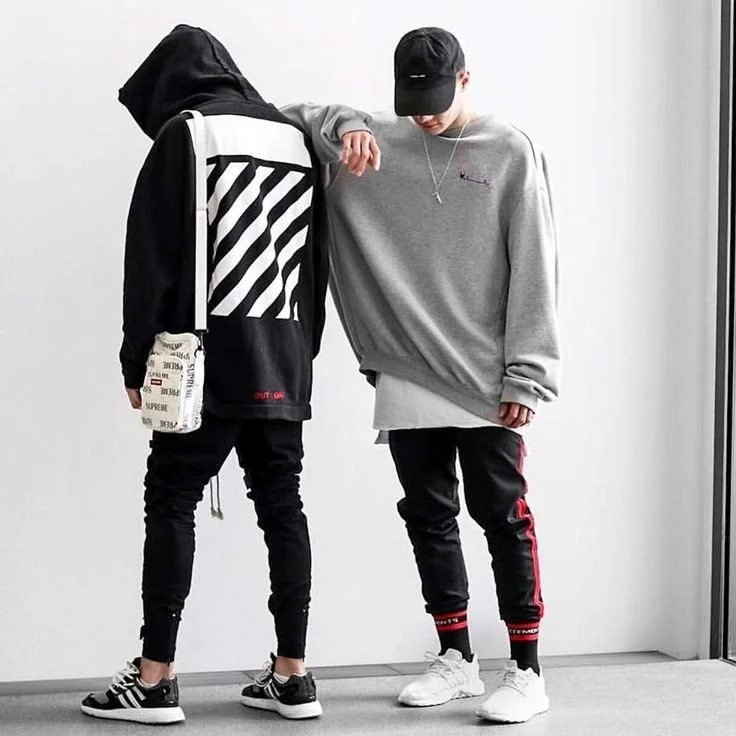What is collaboration for? At its finest it is the coming together of values. At its worse, it is a luxury brand’s attempt to crawl back into relevancy—riding on the coattails of the latest streetwear craze. Sadly the former is less common than the latter. While through well crafted collaborations brands have the ability to cast their story and magic to a wider audience and catapult two brands into power-couple status, they come with inherent risk. Poorly conceived collaborations can lead a luxury brand to lose its untouchable mysticism, its recognition for creative influence, and most dangerous of all: lose its core loyal audience.
Why Brands Collaborate
As the Business of Fashion offers, “the [collaborations] move comes as more and more luxury brands are tapping the cultural energy and business model of streetwear to stay relevant with millennial customers, who drove 85 percent of luxury growth last year and increasingly demand newness and novelty.”
At first glance this may seem as a genius strategy, as Gen-Z and Millennials will account for 45% of the global luxury market (Bain & Company) by 2025, but as another Bain report offers, Baby Boomers today continue to drive the demand for luxury consumption.
And while Millennials and Gen-Z’s demand for street-wear brands like Kith and Supreme are important to recognize, the average age of an individual in the Gen-Z cohort is that of fourteen. Since when has it been so important for a luxury brand to be relevant to a fourteen year old? Are your thoughts today at all aligned with the thoughts of your fourteen year old self? At fourteen you haven’t developed strong enough of a palate to understand luxury. Luxury brands should of course create a strategy to ensure they remain among Gen-Z’s evoked set, but this strategy should not revolve around their seal of approval.
To the contrary of comments by David Fisher (founder of Highsnobiety), that “it is the luxury brands that are the ones that need credibility in the streetwear space, not the other way around,” true luxury brands do not waver through the trends. Their main goal is to remain influential and to elevate the customer at all times. It is a dual source of aspiration and achievement. This is why luxury is something that you grow into as you develop a strong sense of self and a point of view—an acquired taste. If luxury brands are irrelevant to teenagers today, it is not because they are doing something wrong, they simply haven’t acquired that taste.
A Temporary Rush
However, some brands have moved full speed ahead with a Gen-Z strategy— Balenciaga and Gucci to name a few. But at what cost? Demma Gvasalia may have made Balenciaga “cool”, but seems to have burned all of the brand’s archives and rich heritage along the way. As J N Kapferer and V Bastien offer in The Luxury Strategy; heritage (a unique know-how and culture) is one of the six criteria in defining luxury.
Source: Highsnobiety
The end result? Like every other trendy brand before it, from Givenchy to Saint Laurent, Balenciaga and Gucci’s coolness and temporary profits will wear off. But they will be left with a bigger issue on hand. They will have corrupted their heritage and diluted their brand value; but most pressing of all: by the time this consumer reaches adulthood, and has the discerning point of view and the financial wherewithal to buy into luxury, the brand will be old news. Luxury is about progress and achievement, it is about becoming a better version of ourselves. When that time comes for the young consumer of today, they will seek brands with rich histories that embody that rite of passage.
Risking Creative Influence
Then there are those who are argue that collaborations are necessary to keep things fresh and desirable. But true luxury companies have been doing this for decades without collaborations. And then there is the argument of nostalgia, that collaborations satisfy this yearning to go back to the past—the past does always seem more simple and romantic doesn’t it? But once again luxury companies have been revisiting the past and re-imagining iconic house codes without collaborations. Think of when CHANEL reissued the 2.55, or when Frida Giannini re-imagined the Jackie and Bamboo bags for Gucci. In these instances re-issuing a look or piece wasn’t simply bringing something back. It was a celebration of how an iconic item had changed a generation, and an exemplar way to show a brand’s stability through time.
Source: KITH
The collaborations that inundate us today do neither of the aforementioned. They don’t raise the bar of craft or creativity— providing a vision of what could be—nor do they re-interpret the past. All that collaborations do is smash logos together, from Louis Vuitton and Supreme, Kith and Tommy Hilfiger, to Ralph Lauren and Prime. At times, this smashing of logos comes from companies that don’t even make any sense—I am still trying to wrap my head around the Coca-Cola and Kith collaboration.
Once again I ask, at what cost? Luxury fashion used to be looked upon for continuously pushing the boundaries, and leading the way. Think of CHANEL and the little black jacket, Yves Saint Laurent and Le Smoking, or Marc Jacobs and grunge. But with a single collaboration, Ralph Lauren which for decades was the truest symbol of a lifestyle luxury brand, has corrupted decades of a perfected dream.
Risking Core Loyal Audience
As Jacobs notes in an article by Cathy Horyn, discussing his then infamous grunge show, these collections had an impact because they didn’t seek to cater to the desires and understanding of the masses. Unlike those of today, collections like Jacob’s were intended for a special group, “a very specific and special group that understands the vocabulary, the irony, the perversity, and the content of it. So, it’s almost by definition not something that most people should see.”
While not intended for everyone, they did make you stop and think, adding to the brand value. Today in pursue to cater to all and drive sales, designers create a couple of good sneakers for the kids to post about and call it a day. But a lack of provocation remains, and when the earnings-rush dissipates, that legitimacy for clairvoyant creation will too have faded.
Source: WWD
But that’s not all. Once a brand has lost its raison d’être, the social-fabric that connects those who Jacob’s refers to as a “special group” is gone. Take Supreme as an example, its collaboration with Louis Vuitton may have been a commercial success, only to have alienated those who truly understood the brand’s essence. As a skater in the Lower East Side told WWD “I think [the collaboration] it’s stupid as s–t,” adding that “it solidifies Supreme’s place in fashion, which is so stupid. They started the brand as a f–k you to fashion, and now they’ve become it.”
Skaters were the subculture that kept the Supreme flame on. As Ana Andjelic offers in Brands Must Hack Culture, “a subculture is made up of people who are more informed and passionate about a topic than anyone else. They are likely to be beta-testers, source material, and advocates for a new product or service.” When a brand loses those who are spreading its message with such gravitas, the brand is done.
So then, what’s a collaboration for?
Collaborations Done Right x The Ultimate Collaboration
In its most basic form a collaboration should be about the coming together of values between collaborator and luxury brand. It is an opportunity to share a brand’s voice to another audience, but both brands must individually have a strong sense of self. It creates the ultimate power-couple and lifts both brands. Such is the Apple Watch collaboration with Hermès. Both brands were able to touch consumers that previously seemed unreachable, and both retained their essence and legitimacy.
As for my vision of the ultimate collaboration, I vote CHANEL X Patagonia. Neither brand needs the other insofar brand relevance is concerned. But each individually is propelled by a strong set of values—values from which they will not waver for temporary profits—that when combined could catapult them to power-couple status. Moreover they both have incredibly discerning subcultures, both which are willing to pay a premium to amplify the brand’s mission. Through a collaboration both could spread their missions even further.
Source: USA Today
Source: Patagonia
And while a dichotomy between both does exist—no one would offer that Patagonia is the most fashionable, nor that CHANEL is the most environmentally cautious—this is exactly why both ensemble could strengthen their brands. The luxury consumer is increasingly altruistically inclined, and spreading Patagonia’s message to CHANEL’s vast consumer base would be a huge step. Furthermore, this collaboration would provide CHANEL’s audience with that provocation they so yearn for. From The President Stole Your Land, to Don’t Buy This Jacket, Patagonia has proven time and time again that it is an expert in provoking thought through its communication efforts.
Some may cry sacrilege, that a CHANEL X Patagonia collaboration would destroy a dream. However this move would not risk CHANEL’s untouchable mysticism, its recognition for creativity influence, nor alienate its core loyal audience. If anything, this collaboration would give us something grander to dream about, and that is what a collaboration is for.









